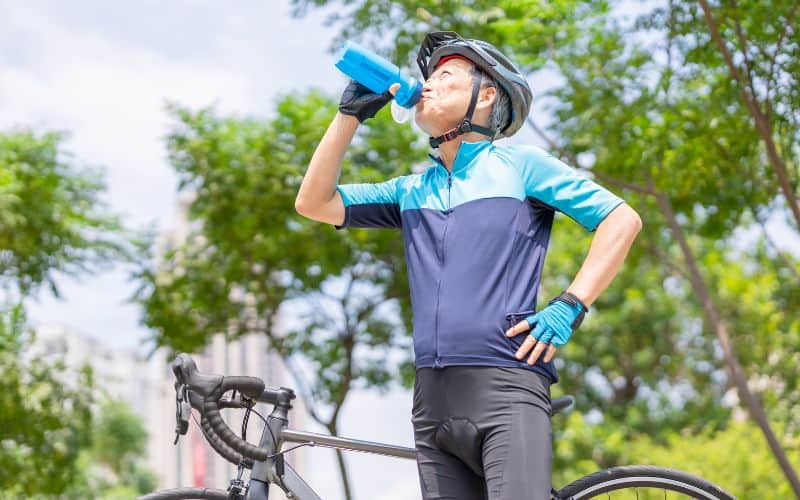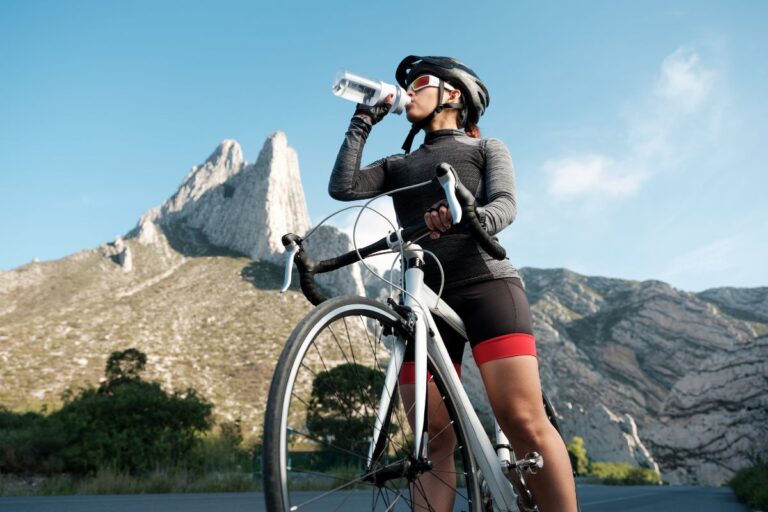Get ready to conquer the ultimate challenge – a 100-mile bike ride! But before you hit the road, there’s something you need to know.
Proper hydration is key to your success. Without it, you’ll risk dehydration, fatigue, cramps, and even heat exhaustion.
The general rule of thumb is to consume approximately one bottle (16-24 ounces, or 0.5-0.7 liters) of water per hour of cycling in moderate conditions.
That being said, the answer isn’t as simple as you might think – there are a few other factors to consider as well.
In this article, we’ll dive into the science of hydration and give you the lowdown on how much water you need to drink during a 100-mile bike ride. Plus, we’ll share some expert tips to help you stay hydrated and avoid any potential health risks.
So, let’s get started!
Why Hydration Is Important
Hydration is essential for your body to function properly, and it becomes even more important during long rides. In this section, we will discuss the benefits of proper hydration and the risks of dehydration.
The Benefits Of Proper Hydration
Proper hydration has several benefits, including:
- Improved performance: When you are properly hydrated, your body can perform at its best. You will feel more energized and less fatigued during the ride. I’m sure you’ve felt a bit sluggish when you haven’t been drinking enough throughout the day!
- Better recovery: Proper hydration can help your body recover more quickly after the ride. It can reduce muscle soreness and improve your overall well-being.
- Improved focus: Dehydration can lead to mental fatigue. This can make it difficult to focus on the ride. After all, the human brain is about 75-85% water!
To help you stay hydrated during your 100-mile bike ride, be sure to bring plenty of water with you. Consider using a hydration backpack or water bottles mounted on your bike. And don’t forget to take regular breaks to refill your water supply and give your body a chance to rest and recover.

The Risks Of Dehydration
Dehydration can have several negative effects on your body, including:
- Muscle cramps: Dehydration can cause muscle cramps, which can be painful and make it difficult to continue the ride.
- Heat exhaustion: Dehydration can increase your risk of heat exhaustion, which can be dangerous and even life-threatening.
- Reduced performance: Dehydration can lead to reduced performance, making it difficult to complete the ride.
To avoid these risks, it is important to stay properly hydrated throughout the ride. Make sure you drink plenty of water and electrolyte-rich fluids before, during, and after the ride. In this post, we’ve covered the best cycling hydration drinks on the market.
Keep an eye on your urine color, and if it is dark yellow, it is a sign that you need to drink more fluids.
Determining Your Hydration Needs – Key Considerations For Your 100-Mile Bike Ride
Before embarking on a 100-mile bike ride, consider these important factors that will affect how much water you need to drink.
Distance And Duration Of The Ride
Clearly, the longer your ride, the more water you’ll need to drink!
As a general rule of thumb, aim to drink at least 20 ounces of water per hour of riding.
So if you’re planning on riding the 100 miles in 5 hours, you’ll need to drink at least 100 ounces of water during that time. This is also assuming moderate conditions. You’ll want to tweak the amount based on the next couple of factors as well.
Weather Conditions
The weather can have a big impact on how much water you need to drink during a 100-mile bike ride.
For someone riding in hot and humid weather like Malaysia, then you’ll need to drink more water to stay hydrated. On the other hand, if it’s cool and dry, you may not need to drink as much water.
Be sure to check the weather forecast before your ride and plan accordingly.

Body Weight And Sweat Rate
Your body weight and sweat rate are two other important factors to consider when determining how much water you need to drink during a 100-mile bike ride.
A good rule of thumb is to drink at least 16-20 ounces of water for every pound of body weight lost during the ride. If you sweat a bit more, go to the upper end of that band and vice versa.
As a baseline, strive for at least 20 ounces of water per hour of riding, adjusting according to the specific conditions and your body’s needs. Always remember to listen to your body’s signals and keep hydration a priority for a successful and enjoyable 100-mile bike ride.
Tips For Staying Hydrated
Here are some additional hydration tips before you start, during, and post-ride. This will ensure you’re well-hydrated to tackle the century ride!
Pre-Ride Hydration
Proper hydration should start before you even hop on your bike.
- Drink plenty of water in the days leading up to your ride to ensure that you start your ride properly hydrated
- Guzzle down some water before you eat. Not only does this help you stay hydrated, but also ensures you’re not mixing thirst with hunger
- Some will say to avoid caffeine but I’ve found the performance benefits outweigh the dehydration impact, so this one is very much user-dependent
- Avoid alcohol which can dehydrate you – save that beer for the finish line!
During-Ride Hydration
Here are some tips to help you stay hydrated during your ride:
- Drink frequently and consistently on the bike. Aim to take a couple of good-sized swigs from your bottle every 15-20 minutes. I personally start right from the moment I get going
- Don’t wait until you’re thirsty to drink. By the time you feel thirsty, you’re already dehydrated
- Consider using a hydration backpack or a second bottle cage to carry more fluids with you.
Post-Ride Hydration
Replenishing fluids after your ride is just as important as hydrating before and during your ride.
- Drink fluids immediately after your ride. Aim to drink 16-20 ounces of water or a sports drink within 30 minutes of finishing your ride.
- Continue to drink fluids throughout the day to replenish what you lost during your ride.
- Consider adding a protein drink to your post-ride routine to help with muscle recovery.
By following these tips, you can perform your best during your 100-mile bike ride and not feel shattered at the end! Remember, proper hydration is key to your success.
Final Thoughts
As mentioned, aim for at least 20 ounces of water per hour of riding. Tweak this up and down depending on your ride conditions. As you’ve trained for the century ride, you will have acclimatized to how your body reacts to long rides. Listen to that – it’s important feedback!
In addition to water, you may also need to consume electrolytes and carbohydrates to fuel your body and prevent cramping. You can use sports drinks, gels, or energy bars to replenish your body’s nutrients during the ride. Again, experiment with different types of drinks and snacks during your training to find out what works best for you.
Good luck with your century ride and ride on!
You may also enjoy reading:

